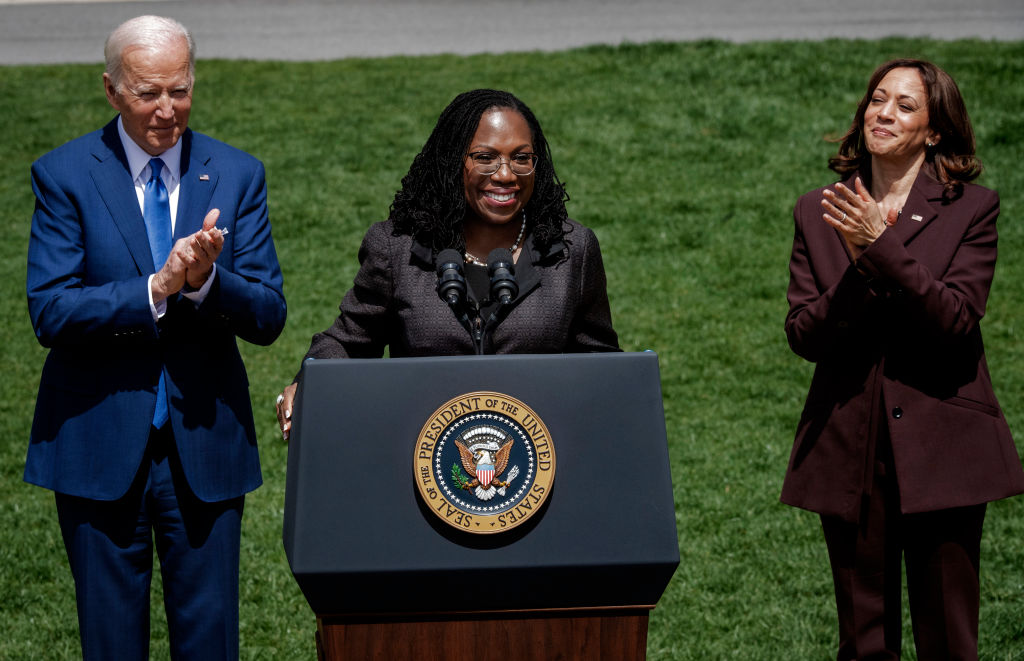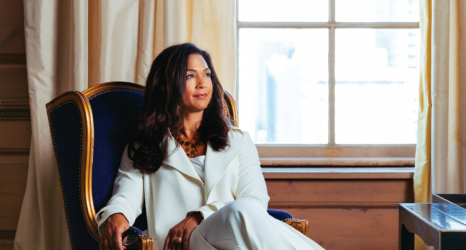Updated on Sept. 30, 2022, at 8:33 a.m. PT: The Supreme Court hosted a formal investiture ceremony for Justice Ketanji Brown Jackson, with President Joe Biden and Vice President Kamala Harris both in attendance. After the ceremony, Jackson—the first Black woman and the third Black justice to ever serve on the Court—took her seat on the bench.

Justice Ketanji Brown Jackson just officially took her seat on the Supreme Court, making her the first-ever Black woman to serve as a justice in the Court’s 233-year history.
The feelings of pride and hope over Jackson’s historic nomination to the Supreme Court overlap with the unfortunate knowledge that it has taken centuries to get to this point. Jackson’s ascension to this well-earned seat must prompt a discussion about the underrepresentation of women and people of color behind the bench.
When Columbia University denied admission to three female applicants in 1890, lawyer and Columbia trustee George Templeton Strong said, “No woman shall degrade herself by practicing law … if I can save her.” Despite decades of odious opinions like this, women lawyers have worked for centuries to open the law profession in the United States. The earliest American female lawyers drew upon the sentiments expressed in the Seneca Falls Declaration, chastising men for monopolizing “nearly all the profitable employments.”
History shows that the push to accept women into the legal field was made by individual effort and perseverance. For women lawyers today, it is not so different.
Since 1992, the ratio between female to male law students has approached and surpassed gender balance. However, women remain vastly underrepresented in judicial appointments, despite making up a large swath of high-power lawyers in our country. This is likely due to various systemic roadblocks, ranging from inadequate recruitment into the legal profession for young women, inflexible workplace structures, and the pervasive gender bias held by many in the legal profession when appointing or electing a woman judge.
Since 1992, the ratio between female to male law students has approached and surpassed gender balance. However, women remain vastly underrepresented in judicial appointments.
Just 65 out of the 175 active judges on the federal circuit courts are female, and just 37 percent of state Supreme Court seats. Only 14 states have gender-balanced Supreme Courts. Out of the 115 justices that have served on the highest court of the United States, just six were women—four of whom are currently on the bench, including Jackson.
This ratio worsens for women of color, who comprise less than 10 percent of federal district and circuit court judges. In 22 states, no justices publicly identify as a person of color, including in 11 states where people of color make up at least 20 percent of the population.
Across all-state high courts, just 17 percent of justices are Black, Latino, Asian American or Native American. In 2021 there were no Black justices in about 28 states; no Latino justices in 40 states; no Asian American justices in 44 states; and no Native American justices in 47 states.
Additionally, over one-third (about 37 percent) of sitting state Supreme Court justices are former prosecutors, while only 7 percent are former public defenders.
In the wake of recent events, this is an issue. A more diverse judicial branch equates to a more representative government. Different perspectives often lead to diverse readings and implications of rulings, more in line with the court of public opinion. For example, the study “Untangling the Causal Effects of Sex on Judging,” found that male federal appellate court judges are less likely to rule against plaintiffs bringing claims of sex discrimination if a female judge is on the panel. Who we see representing us behind the bench matters just as much as in front of it—in Congress, state houses and the White House.
In the face of recent events regarding the overturning of Roe v. Wade, we must change the face of justice in America through intentional actions and data-backed best practices to elect and appoint more women to judicial offices. Greater representation of all women in the judiciary won’t happen through mentorship alone; we need to advance rules changes that ensure more women are considered and selected for these offices.
Women and POC judges and prosecutors are necessary for protecting, upholding and modernizing our legal institutions. We congratulate Justice Ketanji Brown Jackson on her ascension to the United States Supreme Court. This historic achievement is an accomplishment for Jackson and a win for our democracy; we must continue with a dedication to diversity in justice.
Sign and share Ms.’s relaunched “We Have Had Abortions” petition—whether you yourself have had an abortion, or simply stand in solidarity with those who have—to let the Supreme Court, Congress and the White House know: We will not give up the right to safe, legal, accessible abortion.
Up next:





